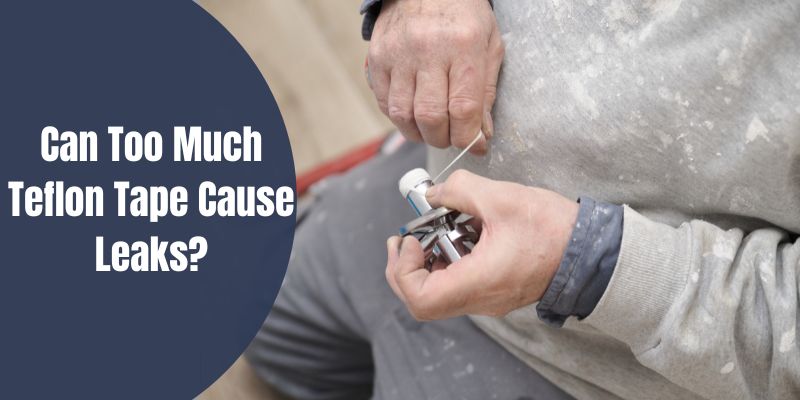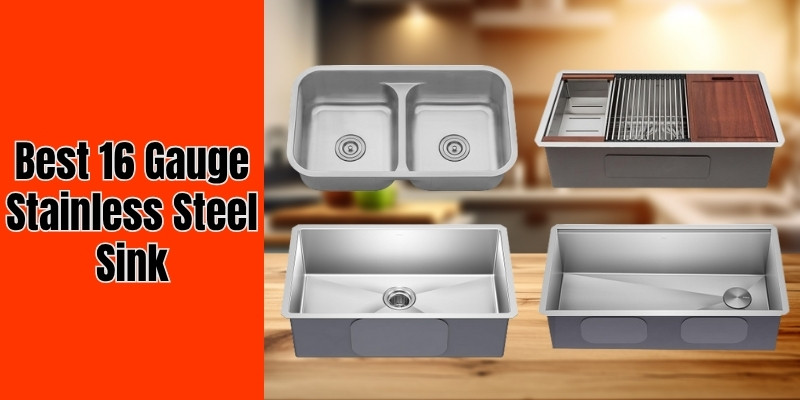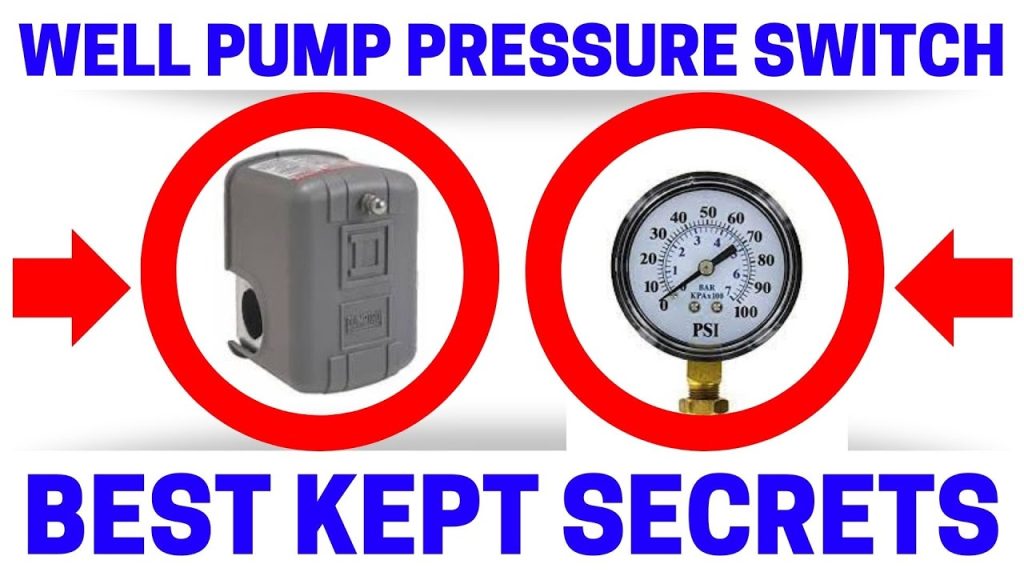Disclosure: This post contains affiliate links and I will be compensated if you make a purchase after clicking through my links. Learn More
You’ve just finished installing a new faucet, showerhead, or pipe joint, and you want to ensure it stays leak-free. Enter Teflon tape, a common plumber’s tool used to create a watertight seal in threaded connections.
But have you ever wondered if using too much Teflon tape could actually lead to leaks? In this in-depth article, we’ll explore the topic of whether excessive Teflon tape usage can cause leaks, backed by expert knowledge and credible sources.
We’ll debunk myths, address common concerns, and provide practical solutions to ensure a seamless plumbing experience.

Can Too Much Teflon Tape Cause Leaks?
To begin our exploration, let’s address the core question: Can too much Teflon tape cause leaks? The answer, fortunately, is a resounding “no.” Teflon tape, also known as PTFE tape, is designed to create a tight, waterproof seal between threaded pipe connections. It is a thin, flexible, and highly effective material that lubricates threads, allowing for easier tightening and preventing leaks.
Using a moderate amount of Teflon tape around the male threads of a connection is sufficient to achieve a proper seal. However, applying an excessive amount of Teflon tape can be counterproductive, as it may lead to other issues, such as difficulty tightening the joint or excess tape protruding into the pipe, causing clogs or blockages.
To summarize, while too much Teflon tape won’t directly cause leaks, it’s essential to use the appropriate amount to achieve a secure and functional seal.
The Right Way to Apply Teflon Tape
Now that we’ve established the ideal amount of Teflon tape to use, let’s delve into the proper application process to ensure a leak-free plumbing job.
Step 1: Prepare the Threads
Before applying Teflon tape, make sure the male threads of the connection are clean and free from debris or old tape residue. Use a wire brush or cloth to clean the threads thoroughly.
Read Here: How to Remove Old Teflon Tape
Step 2: Wrap the Teflon Tape
Take the end of the Teflon tape and align it with the starting point of the male threads. Hold the pipe or fitting firmly with one hand and use the other hand to wrap the tape around the threads in a clockwise direction. Ensure that the tape is pulled taut and covers the entire threaded area.
Step 3: Apply the Correct Number of Wraps
For most standard pipe connections, 3 to 5 wraps of Teflon tape are usually sufficient. Avoid excessive wraps, as they can lead to complications during tightening.
Step 4: Tighten the Connection
After applying the Teflon tape, assemble the joint and tighten it using an appropriate tool, such as a wrench. Be cautious not to overtighten, as this can damage the threads or the fitting.
By following these steps, you can ensure a proper Teflon tape application that minimizes the risk of leaks while maximizing the effectiveness of the seal.
The Myths of Teflon Tape and Leaks
Over time, various myths and misconceptions have emerged regarding Teflon tape and its association with leaks. Let’s debunk some of the most common myths and provide factual information.
Myth 1: More Teflon Tape Means Better Sealing
One prevalent misconception is that using an excessive amount of Teflon tape will provide a better and tighter seal. As we mentioned earlier, this is not the case. In fact, using too much Teflon tape can lead to complications during the tightening process and may cause other issues, such as tape protrusion and blockages.
Myth 2: Teflon Tape Is Only for Plumbers
While plumbers commonly use Teflon tape, it is not exclusive to professionals. DIY enthusiasts can also benefit from using Teflon tape for simple plumbing tasks, provided they apply it correctly and in the right amount.
Myth 3: Teflon Tape Is Not Effective for High-Pressure Systems
Contrary to this belief, Teflon tape is highly effective even in high-pressure plumbing systems. When correctly applied, it can withstand significant pressure and maintain a reliable seal.
Myth 4: Teflon Tape Should Be Reused
Teflon tape is not designed for reuse. Once it has been applied and the connection has been tightened, it is best to cut off any excess tape. Reusing Teflon tape can compromise its effectiveness and lead to leaks.
By dispelling these myths, we can ensure that users have accurate information about Teflon tape and its role in preventing leaks in plumbing systems.
installation using the right amount of Teflon tape can save you from the hassle of dealing with leaks and potential water damage down the road.
What Happens If You Use Too Much Teflon Tape?
Applying Teflon tape in plumbing projects is a common practice to ensure leak-free connections. However, as with any good thing, moderation is key. Let’s explore what happens when you use too much Teflon tape.
Excessive Teflon tape can lead to complications during the tightening process. When there is an excessive amount of tape, it may not allow the fitting to be properly tightened. As a result, the joint may not create a snug seal, potentially leading to leaks.
Moreover, too much tape can cause the excess material to protrude into the pipe when tightening, risking partial blockages or even complete obstructions. This situation can disrupt the water flow and cause potential plumbing issues down the line.
In summary, using too much Teflon tape can hinder the proper assembly of fittings, increase the risk of leaks, and potentially lead to other plumbing problems.
How Many Wraps of Teflon Tape to Seal?
When it comes to applying Teflon tape, the number of wraps required to achieve a proper seal depends on the type of connection and the thread size. Generally, three to five wraps are recommended for most standard pipe connections.
For smaller threads or finer pitches, additional wraps may be needed to ensure a secure seal. On the other hand, larger threads or coarser pitches may require fewer wraps. The goal is to provide enough Teflon tape to create a snug and watertight seal without excessive material that might cause issues during tightening.
It’s essential to consider the specific requirements of your plumbing project and use the appropriate number of wraps accordingly.
How Many Times Do You Wrap Teflon Tape Around a Fitting?
To achieve a secure and reliable seal, you should wrap the Teflon tape around the fitting’s male threads in a clockwise direction. As mentioned earlier, the recommended number of wraps is typically between three and five for standard pipe connections.
However, keep in mind that the number of wraps may vary depending on the thread size, type of connection, and the manufacturer’s recommendations. Always refer to the manufacturer’s guidelines or consult with a professional if you are unsure.
Additionally, make sure that the Teflon tape is applied smoothly and evenly along the threads without any gaps or overlaps. Proper application ensures a uniform seal and minimizes the risk of leaks.
Remember, using the right amount of Teflon tape and wrapping it correctly will lead to a successful and leak-free plumbing project.
Final Words
By following these guidelines and having a good understanding of Teflon tape usage, you can confidently tackle plumbing projects and achieve leak-free results.
Remember, the key is not just using Teflon tape, but using it correctly. A well-applied tape can make all the difference in ensuring the longevity and effectiveness of your plumbing connections.
So, next time you find yourself reaching for that roll of Teflon tape, apply it with confidence, knowing that you have the knowledge to create a reliable seal that will stand the test of time.
Now, go forth and conquer your plumbing tasks with the newfound expertise in Teflon tape application. Happy plumbing!
For Same Day plumbing service in Orland Park Just Contact Us.


